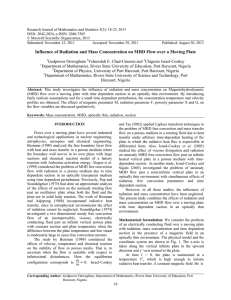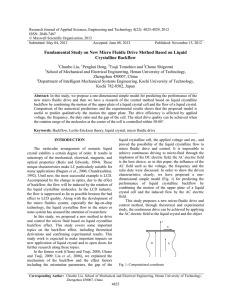S
advertisement
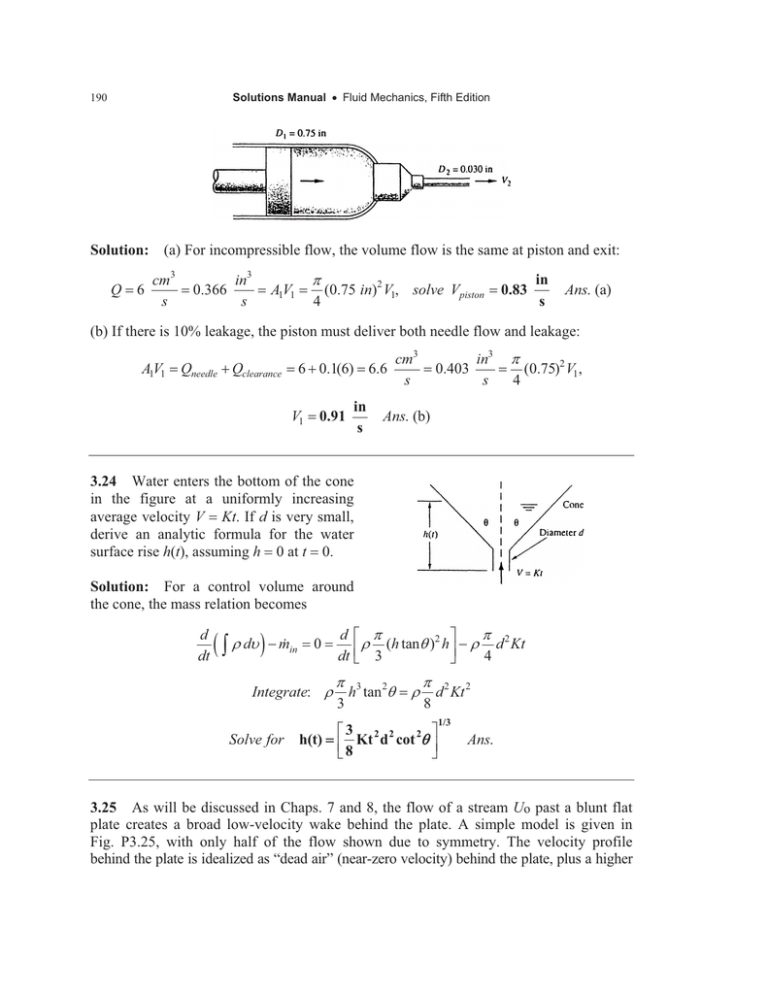
Solutions Manual x Fluid Mechanics, Fifth Edition 190 Solution: (a) For incompressible flow, the volume flow is the same at piston and exit: Q 6 cm3 s 0.366 in3 s S A1V1 4 (0.75 in)2 V1, solve Vpiston 0.83 in s Ans. (a) (b) If there is 10% leakage, the piston must deliver both needle flow and leakage: A1V1 Qneedle Qclearance 6 0.1(6) 6.6 V1 0.91 in s cm3 s 0.403 in3 s S 4 (0.75)2 V1, Ans. (b) 3.24 Water enters the bottom of the cone in the figure at a uniformly increasing average velocity V Kt. If d is very small, derive an analytic formula for the water surface rise h(t), assuming h 0 at t 0. Solution: For a control volume around the cone, the mass relation becomes d dt ³ U dX m in 0 Integrate: U Solve for h(t) d ª S S º U (h tanT )2 h » U d 2 Kt « 4 dt ¬ 3 ¼ S 3 h3 tan 2T U S 8 d 2 Kt 2 ª3 2 2 2 º «¬ 8 Kt d cot T »¼ 1/3 Ans. 3.25 As will be discussed in Chaps. 7 and 8, the flow of a stream Uo past a blunt flat plate creates a broad low-velocity wake behind the plate. A simple model is given in Fig. P3.25, with only half of the flow shown due to symmetry. The velocity profile behind the plate is idealized as “dead air” (near-zero velocity) behind the plate, plus a higher
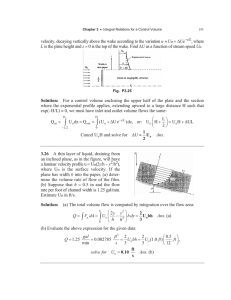
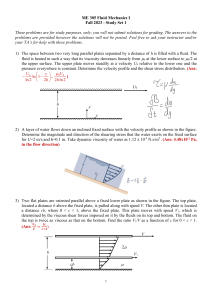


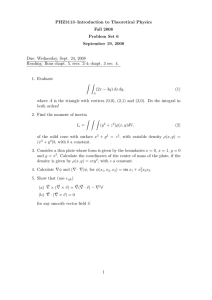

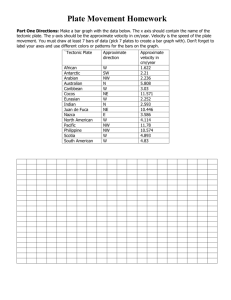
![The streamlines are logarithmic spirals moving out from the origin. ... about O.] This simple distribution is often used to...](http://s2.studylib.net/store/data/012446347_1-856dfe1450220540b95d56f386c12aa6-300x300.png)

